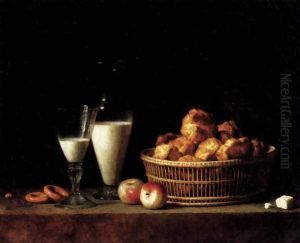Henri-Horace Roland Delaporte Paintings
Henri-Horace Roland Delaporte was a French painter, born in 1724 in Paris. He was a student of the celebrated French painter Carle van Loo, who was a prominent figure in mid-18th century French art. Under van Loo’s tutelage, Delaporte developed a style that reflected the Rococo aesthetic, which was characterized by graceful, light, and often frivolous decoration with an emphasis on curved lines.
Delaporte became a member of the Royal Academy of Painting and Sculpture in 1766, which was a significant milestone in an artist's career in France at the time. His admittance into the Academy signifies that he was recognized by his peers for his artistic talent and achievements. As a member, he would have been involved in the important artistic decisions and exhibitions of the period.
During his career, Delaporte painted a wide range of subjects, including religious and mythological scenes, portraits, and genre scenes. He was known for his skill in capturing the textures of fabrics and the subtleties of flesh tones, which was highly regarded during the Rococo period. However, unlike some of his contemporaries, Delaporte did not achieve the same level of fame and his works were less in demand.
Roland Delaporte's career spanned a period of significant change in French art, as the Rococo gave way to the Neoclassicism towards the end of the 18th century. Neoclassicism was a movement that sought to return to the simplicity and purity of the arts of Rome and the Renaissance, which did not align with Delaporte’s Rococo style.
He died in 1793, which was a tumultuous time in France as it was during the French Revolution. The Revolution led to changes in the art world with the Royal Academy being abolished in 1793 and replaced with the Institut de France in 1795. Delaporte’s work is now mainly of historical interest, and while he may not be as well-remembered as some of his peers, his paintings still offer insight into the tastes and styles of the French Rococo period.
